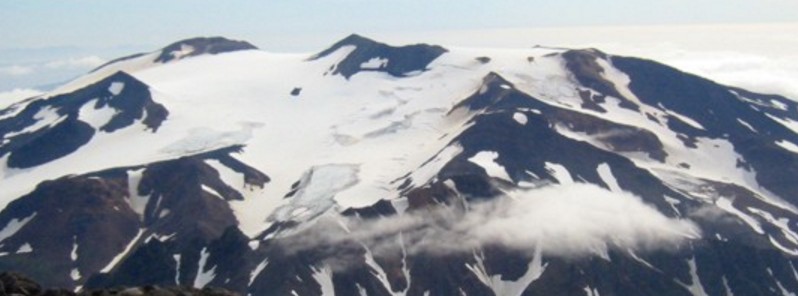Energetic earthquake swarm under Takawangha volcano, Alaska

An energetic earthquake swarm was detected under Alaskan Takawangha volcano on January 23, 2017, prompting the Alaska Volcano Observatory to raise Aviation Color Code to Yellow and Alert Level to Advisory on January 24. The last known eruption of this volcano took place in 1550.
The earthquakes are located 6 to 7 km (3.7 to 4.3 miles) ESE of Takawangha Volcano. Two of them had magnitudes above 4; M4.1 and 4.4 at a depth of 7 and 10 km (4.3 and 6.2 miles), respectively
"This activity may be due to brittle failure in the surrounding rock caused by magma movement," AVO said and raised the Aviation Color Code to Yellow and Alert Level to Advisory. No eruptive activity has been detected in satellite data.
The seismicity has waxed and waned over the past 24 hours, the observatory reported late January 24.
The last known eruption of this volcano took place in 1550, Volcanic Explosivity Index is unknown.
Parts of Takawangha's edifice are hydrothermally altered and may be unstable, possibly leading to localized debris avalanches from its flanks. Takawangha lies across a saddle from historically active Tanaga volcano to the west.
Geological summary
Takawangha is a 1449-m-high, youthful volcano with an ice-filled caldera on northern Tanaga Island, near the western end of the Andreanof Islands. Takawangha lies across a saddle from historically active Tanaga volcano to the west; older, deeply eroded volcanoes lie adjacent to Takawangha on the east.
The summit of the dominantly basaltic to basaltic-andesite volcano is largely ice covered, with the exception of five Holocene craters that during the last few thousand years produced explosive eruptions and lava flows that reached the lower flanks of the volcano.
No historical eruptions are known from Takawangha, although radiocarbon dating indicates explosive eruptions have occurred within the past several hundred years. (GVP)
Featured image: The broad Takawangha volcano is seen looking east from the summit of East Tanaga. Photo by Michelle Coombs, 2003 (Alaska Volcano Observatory, U.S. Geological Survey).

Commenting rules and guidelines
We value the thoughts and opinions of our readers and welcome healthy discussions on our website. In order to maintain a respectful and positive community, we ask that all commenters follow these rules:
We reserve the right to remove any comments that violate these rules. By commenting on our website, you agree to abide by these guidelines. Thank you for helping to create a positive and welcoming environment for all.